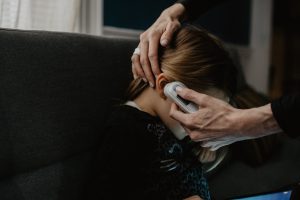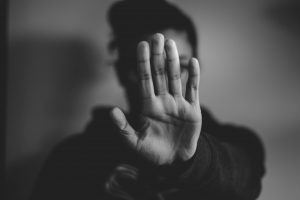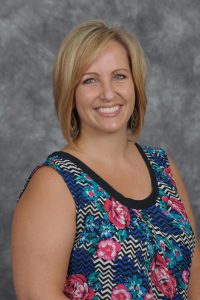By: Dr. Jennifer Geddes Hall, Clemson University
Classrooms today are complex environments to navigate for teachers. There are standardized tests for almost every subject and grade level and teachers are expected to have every student, no matter the circumstances, pass these exams. They are expected to differentiate instruction based on the individual needs of each student all while being tasked with adhering to COVID health guidelines and participating in active shooter drills. Even more so today than in days of the past, teachers are responsible for addressing not only the academic needs of students but their social and emotional needs as well. Now that the racial unrest of our country, which has been around for decades, is more visible with violence against BIPOC and police brutality popping up on social media and news outlets, schools and teachers are charged with making their classrooms safe for all students.

Safety is not ensured by having a school resource officer, locked doors for visitors who wish to enter, temperature checks at the door, or sanitizing stations at every corner. Safety outside of this context must address the culture of the school and the emotional safety and well-being of students from various backgrounds. What do I mean by emotional safety? Emotional safety includes feeling a sense of belonging in the fabric of the school and its community. Feeling safe enough to be vulnerable and share struggles and victories without fear of consequences or backlash. Feelings of togetherness and not otherness. In short, safety is created through positive relationships and unconditional positive regard.
Microagressions and Macrogressions
Micro/macroaggressions can jeopardize this sense of safety and quickly create a negative school culture and harmful experiences for BIPOC students of all ages. Let’s first explore microaggressions. Microaggressions are commonly defined as subtle, degradations and putdowns -intentional or unintentional- disguised as jokes and/or compliments that are manifestations of racism and privilege which cause negative/harmful effects on the recipient. Some examples related to racial microaggressions include: Where are you from? You speak so clearly and eloquently! You don’t act Black. I’m colorblind. What are you? Can I touch your hair?

Although these may seem like “harmless” comments, they have great impact and BIPOC experience these types of interactions several times every day. Microaggressions such as these perpetuate the idea that BIPOC students are different, unusual, abnormal and can ultimately tear them down. Research has shown that the impacts of microaggressions can affect blood pressure, lower feelings of well-being and self-esteem, and increase stress, anger, frustration, anxiety, and depression. Outwardly it may appear that students are disengaged, verbally and physically aggressive towards peers and/or teachers, noncompliant, struggle academically, and/or drop out of school. Similarly, macroaggressions are obvious, larger scale or overt acts of aggression such as environmental macroaggressions and institutional/ideological macroaggressions (Compton-Lilly, 2020). Lack of BIPOC representation or items that convey racialized messages and areas within the school building or grounds that are racially insensitive such inadequate resources, inequitable policies/practices, and apathy in addressing impact of race or racial issues in the system are all examples of macroaggressions that may be occurring in our schools. These larger scale issues often lead to disproportionate levels of expulsion, suspension, and disciplinary actions against BIPOC students, increased negative attitudes and toxic school culture.
Creating Safe Spaces for Black, Indigenous and People of Color
So how do teachers create safe spaces and help to positively impact change against micro/macroaggressions in their classrooms and schools? First off, teachers need to be open to examining and addressing their own implicit biases and areas of privilege. When we open our eyes to the messages about BIPOC that our society and environments have placed upon us, we can be more intentional about removing them from our way of being and interactions with students and others. We also need to be proactive in building relationships with all of our students and outwardly express our support for BIPOC. When we take time to connect, understand, and empathize rather than dismiss student experiences, we build relationships and trust. Research has demonstrated that when there is at least one caring, responsive, attuned person in a student’s life, it can impact the resilience and success of that student. Including representation of BIPOC and diversity in academic content and in classroom environments also conveys support. Representation is powerful.

When teachers hear others using or perpetuating microaggressions we need to intervene and stop them. This will demonstrate care and concern for our students, provide a model for others, and will help to decrease negative interactions that BIPOC students might experience during the school day. Instances of repeated or intentional microaggressions by students should be treated as bullying and addressed through the school’s bullying policy. Unfortunately, there are also instances of teachers and other adults in the schools who use microaggressions. These instances should also be addressed immediately and brought to the attention of administration for repercussions. Microaggressions of any kind are harmful but those initiated by adults in the school building have more impact due to differences in power, control, and privilege.
A Collaborative Solution
Finally, to address micro and macroaggressions teachers should communicate and collaborate with their school counselors in an effort to develop positive change in the school culture. School counselors are uniquely trained to address the mental health and emotional needs of students as well as advocate and implement data-based interventions for systemic change. School counselors have a larger view of issues in the school, access to data which can support needed efforts, ability to collaborate across many domains, and a seat at the leadership table by working closely with administrators. They have relationships with students, parents, and with adults in the school and community. Together, teachers and school counselors can work to focus on changes that need to be made in the classroom, such as bias that may be influencing grading practices or classroom lessons or group counseling interventions that may be necessary to build student skills related to cultural empathy. School counselors may also need to partner with teachers in providing cultural competency training to adults in the school and presenting school data on cultural climate to the school board/administration in an effort to improve conditions and policies/practices to ensure equity. I ask you to think about and consider what you will do in your classroom to take these steps forward? What actions will you take to make sure your school is a safe space for all? Change is not a choice, it is imperative.
For more resources on how to make classrooms more equitable and inclusive visit https://www.tolerance.org/
About the Author

Dr. Jennifer Geddes Hall is an assistant clinical professor at Clemson University, teaching in the Counselor Education program and serving on the College of Education’s Community and Diversity committee and taskforce for Inclusive Excellence. She is a licensed professional counselor and certified school counselor with over 17 years of combined experience as a child/teen therapist and school counselor. Dr. Hall has worked in community and school settings in diverse, urban communities as well as rural areas. She has a focus on multicultural issues as well as developing cultural competency in her past publications as well as local, state, and national conference presentations. Dr. Hall currently serves on the board for the Association of Child and Adolescent Counseling (ACAC), a division of the American Counseling Association (ACA)
